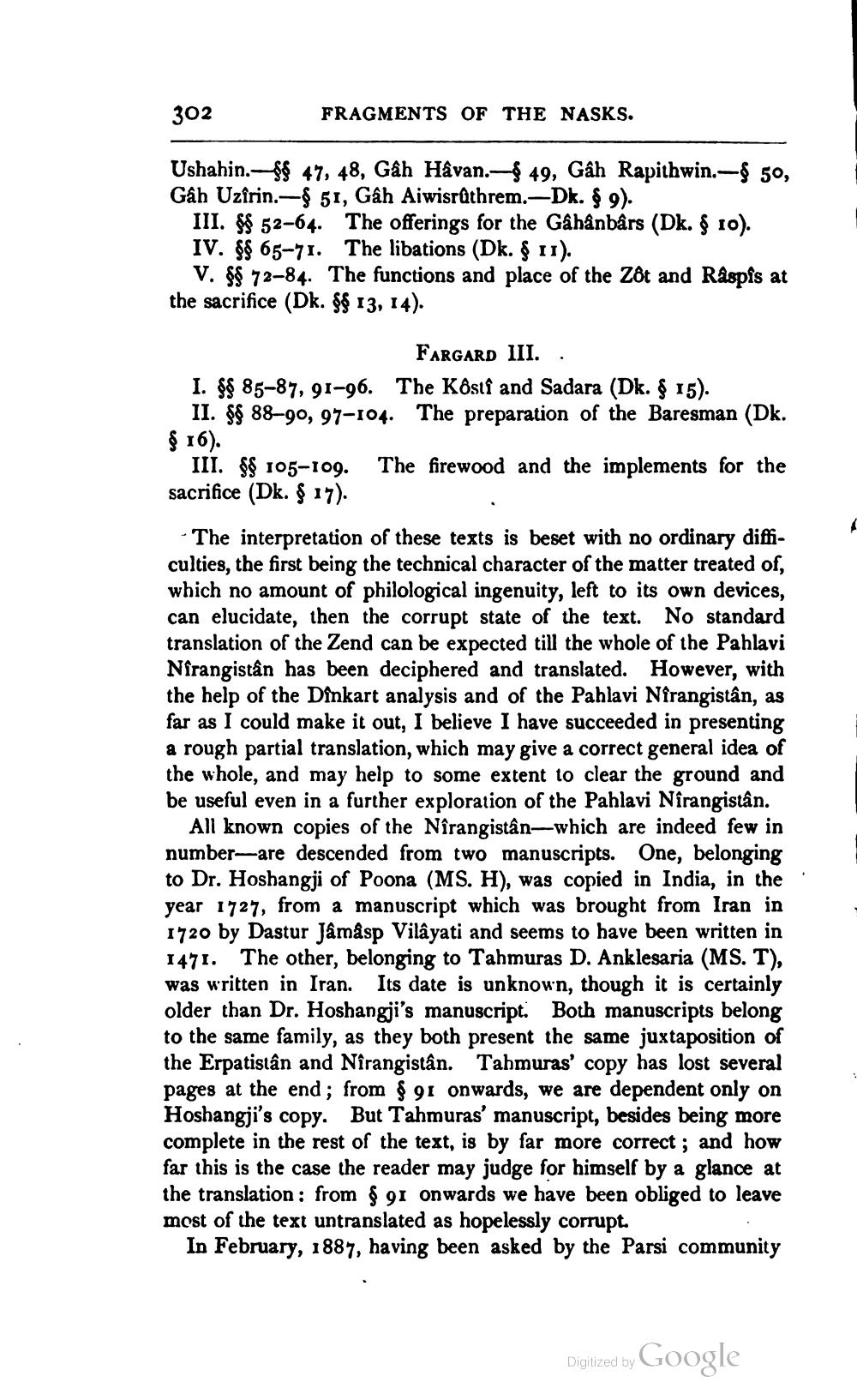________________
302
FRAGMENTS OF THE NASKS.
i
Ushahin.$$ 47, 48, Gâh Hâvan.$ 49, Gâh Rapithwin.-$ 50, Gâh Uzirin.—$ 51, Gâh Aiwisräthrem.-Dk. $ 9).
III. &$ 52-64. The offerings for the Gâhånbärs (Dk. $ 10). IV. &$ 65–71. The libations (Dk. $ 11).
V. $$ 72-84. The functions and place of the Zot and Råspis at the sacrifice (Dk. $$ 13, 14).
FARGARD III. I. $$ 85-87, 91-96. The Kosti and Sadara (Dk. $ 15).
II. $$ 88-90, 97-104. The preparation of the Baresman (Dk. § 16).
III. $$ 105-109. The firewood and the implements for the sacrifice (Dk. § 17).
- The interpretation of these texts is beset with no ordinary difficulties, the first being the technical character of the matter treated of, which no amount of philological ingenuity, left to its own devices, can elucidate, then the corrupt state of the text. No standard translation of the Zend can be expected till the whole of the Pahlavi Nîrangistân has been deciphered and translated. However, with the help of the Dinkart analysis and of the Pahlavi Nirangistân, as far as I could make it out, I believe I have succeeded in presenting a rough partial translation, which may give a correct general idea of the whole, and may help to some extent to clear the ground and be useful even in a further exploration of the Pahlavi Nîrangistân.
All known copies of the Nîrangistân-which are indeed few in number—are descended from two manuscripts. One, belonging to Dr. Hoshangji of Poona (MS. H), was copied in India, in the year 1727, from a manuscript which was brought from Iran in 1720 by Dastur Jâmåsp Vilâyati and seems to have been written in 1471. The other, belonging to Tahmuras D. Anklesaria (MS. T), was written in Iran. Its date is unknown, though it is certainly older than Dr. Hoshangji's manuscript. Both manuscripts belong to the same family, as they both present the same juxtaposition of the Erpatislân and Nîrangistân. Tahmuras' copy has lost several pages at the end; from & 91 onwards, we are dependent only on Hoshangji's copy. But Tahmuras' manuscript, besides being more complete in the rest of the text, is by far more correct ; and how far this is the case the reader may judge for himself by a glance at the translation : from $91 onwards we have been obliged to leave most of the text untranslated as hopelessly corrupt.
In February, 1887, having been asked by the Parsi community
Digitized by Google




